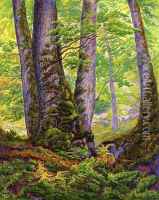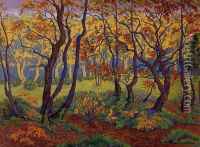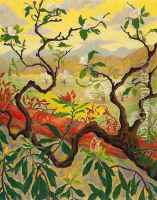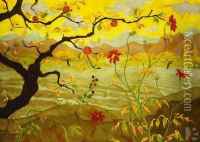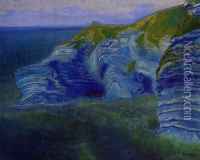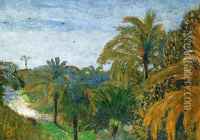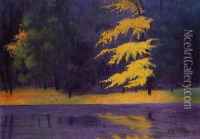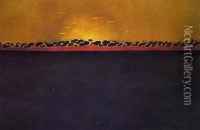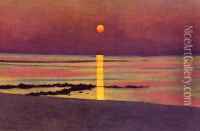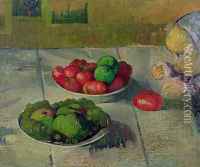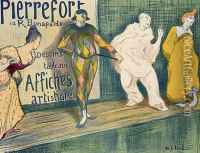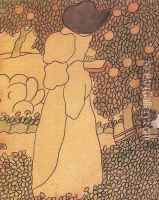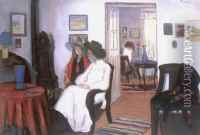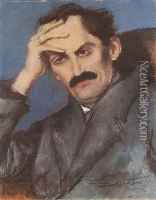Nabis Paintings
Ambitious decorative painting enjoyed a resurgence in Europe from the late 1880s through the early twentieth century. In Paris, Pierre Bonnard (1999.180.1), Maurice Denis (1999.180.2ab), and edouard Vuillard were among the most influential artists to embrace decoration as painting's primary function. Their works celebrate pattern and ornament, challenge the boundaries that divide fine arts from crafts, and, in many cases, complement the interiors for which they were commissioned.
Disaffected with the rigidly representational painting methods taught at the Academie Julian, Bonnard and Denis joined with other like-minded students in the fall of 1888 to form a brotherhood called the "Nabis," a Hebrew word meaning "prophets." The group was spearheaded by Paul Serusier, who had visited Paul Gauguin in Pont-Aven over the summer and was now spreading an aesthetic message based on his interpretation of Gauguin's Symbolism. Serusier sought to free form and color from their traditional descriptive functions in order to express personal emotions and spiritual truths. As evidence of Symbolism's liberating possibilities, he offered a nearly abstract sketch produced under Gauguin's guidance. The Nabis accorded such powers to this work-a loosely handled, brightly colored representation of the Bois d'Amour at Pont-Aven painted on the cover of a cigar box-that it became known as The Talisman (1888; Musee d'Orsay, Paris), suggesting mystical properties. In the 1890s, the group expanded to include Vuillard and several of his fellow students at the ecole des Beaux-Arts, as well as Danish, Dutch, Hungarian, and Swiss artists. The Nabis remained loosely affiliated, and participated in solo and group exhibitions in France and around Europe, until 1899.
The Nabis rejected the Renaissance ideal of easel painting as a window onto a fictional world. Disavowing illusions of depth, they abandoned both linear perspective and modeling. Like many of the Impressionists andPost-Impressionists, they were inspired by the broad planes of unmediated color, thick outlines, and bold patterns that characterizeJapanese prints. Unlike prints, however, Nabi paintings often feature textured surfaces created by varied brushstrokes. In the words of Maurice Denis, the results remind us that painting "is essentially a flat surface covered with colors assembled in a certain order."
